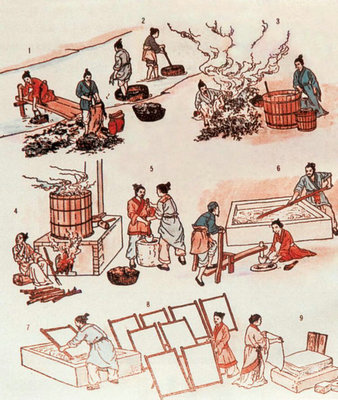The book is to tell the information of early Buddhism in China such as Buddhism in the Tarim Basin, Tiantai Buddhism, Huayan Buddhism, Pure Land Buddhism. I think the significant of these categories are different. I was impressed by there quotes from chapter 16. The author said "The “resonance,” though, went much deeper than simply a shared interest in meditation. Buddhism did not work a revolution in China; rather it helped to bring out and give clearer form to attitudes that were already inherent in Chinese philoso- phy. As Heinrich Dumoulin points out, “Buddhists were especially impressed by the Chinese rejection of the duality between being and non-being, and by their emphasis on the ineffability of reality'" (Bresnan 334). The Buddha's teachings have abstract meaning to people because of highly intensive enlightenment. Tiantai Buddha did develop in an own way. "Tiantai dissolves all conflicts within the Buddhist fold, most notably that between Theravada and Mahayana. Theravadins might not have appreciated being relegated to the most immature ground floor, but there weren’t really many Theravadins in China anyway; Mahayana had succeeded in claiming the field almost entirely for itself. The problem was not one of resolving difficulties with Theravadin groups, but with Theravadin sutras, the basic sutras of the Pali Canon. The Tiantai approach was an excellent solu- tion to this problem. All of the sutras had an important place, but in the most cher- ished place of all was the lordly Lotus Sutra. It became the bible of Tiantai Buddhism...The strength of hatred (and its fellow traveler, anger) is a perfect gauge of the strength of ego. And the ego, the illusion of a private self, is what Buddha held to be the greatest obstacle to liberation. It was for this reason that Zhiyi emphasized the nurturing of compassion in all things. Compassion and ha- tred cannot dwell together under the same roof. Hatred is rooted out by compassion. Here’s how Zhiyi put it:
To root out hatred brings happiness,
And gives freedom from anxiety.
Hatred is poison’s root,
To destroy it brings moral excellence." (Brenan336)
Tiantai Buddhism explains a Buddhism concept of hatred and compassion. In addition, the pure land Buddhism is also formed in China and personally it's quite important to understand an aspect of Buddha. "Philosophically minded Buddhists have in all ages interpreted this matter of Pure Lands in a metaphorical way. The different Pure Lands represent the various aspects of enlightenment. That approach has been popular in Buddhist art, particularly in the use of mandalas to represent the totality of the Dharma. The mandala becomes like a great compass with the many Buddhas appropriately located...This range of interpretations is characteristic of Mahayana; everyone plugs in at his or her own level. Buddha’s teaching is for the whole lotus pond. It was in response to the active role of the common people in Mahayana, and their interest in the possibil- ity of rebirth in a Buddhist paradise, that Pure Land Buddhism took form." (Bresnan 338)
And gives freedom from anxiety.
Hatred is poison’s root,
To destroy it brings moral excellence." (Brenan336)
Tiantai Buddhism explains a Buddhism concept of hatred and compassion. In addition, the pure land Buddhism is also formed in China and personally it's quite important to understand an aspect of Buddha. "Philosophically minded Buddhists have in all ages interpreted this matter of Pure Lands in a metaphorical way. The different Pure Lands represent the various aspects of enlightenment. That approach has been popular in Buddhist art, particularly in the use of mandalas to represent the totality of the Dharma. The mandala becomes like a great compass with the many Buddhas appropriately located...This range of interpretations is characteristic of Mahayana; everyone plugs in at his or her own level. Buddha’s teaching is for the whole lotus pond. It was in response to the active role of the common people in Mahayana, and their interest in the possibil- ity of rebirth in a Buddhist paradise, that Pure Land Buddhism took form." (Bresnan 338)
 |
| Tiantai Buddhism |
 |
| Ancient Chinese invention |
Bresnan, Patrick. "Chapter 16" Awakening: an Introduction to the History of Eastern
Thought. 5th ed., Pearson, 2013.
Culture trip. the History of the Tian Tan Buddha in 1 minute https://theculturetrip.com/asia/china/hong-kong/articles/the-history-of-the-tian-tan-buddha-in-1-minute/